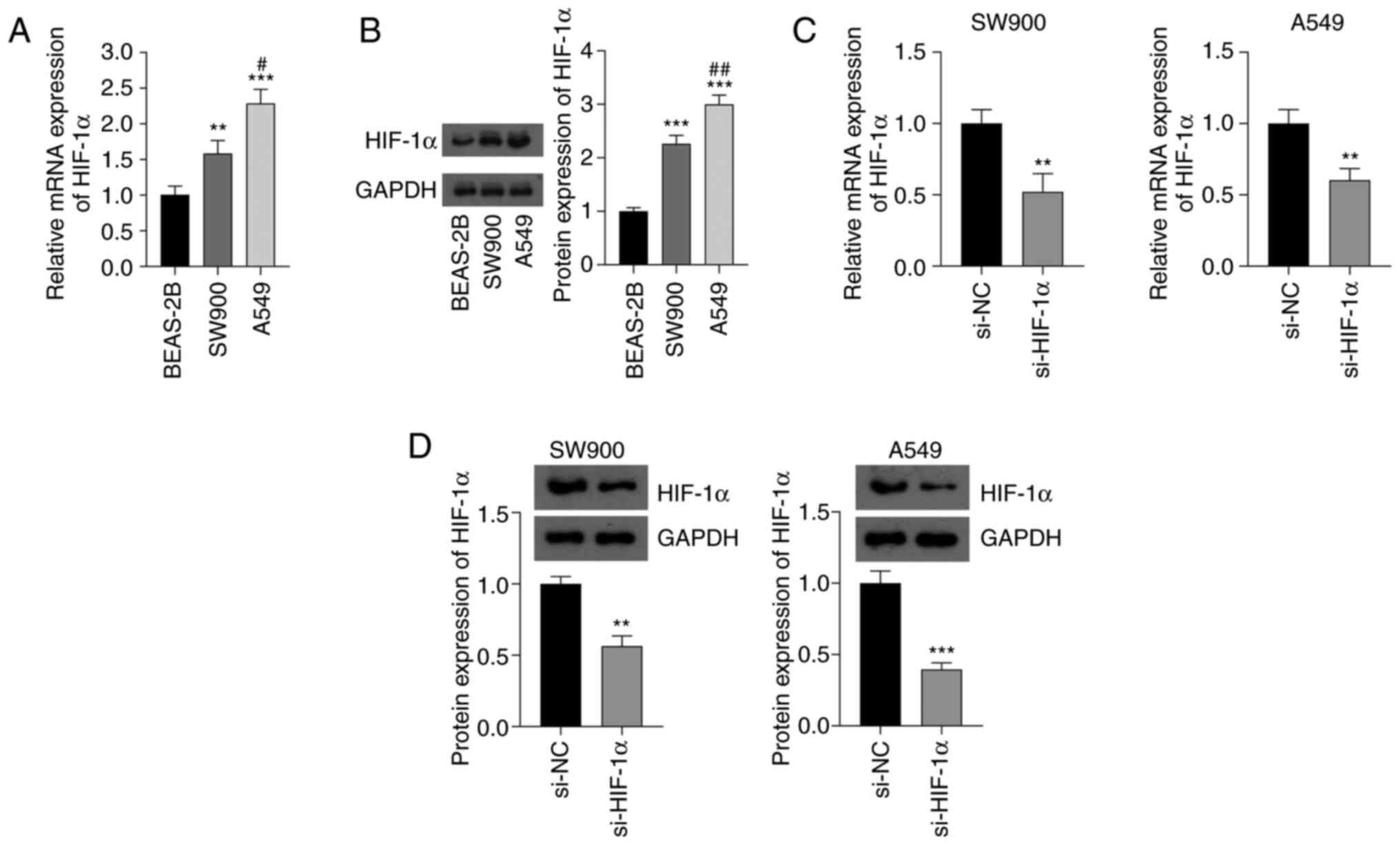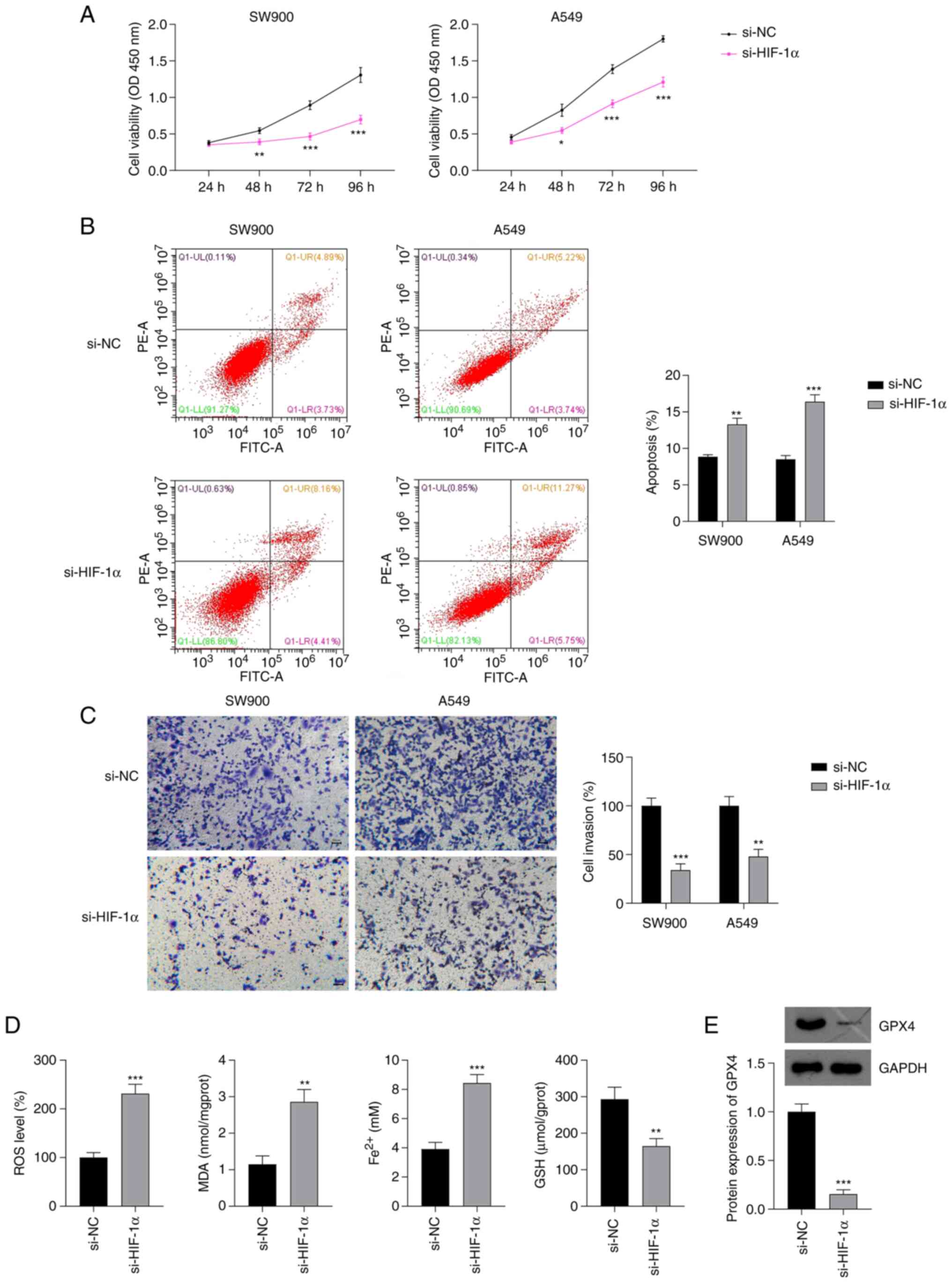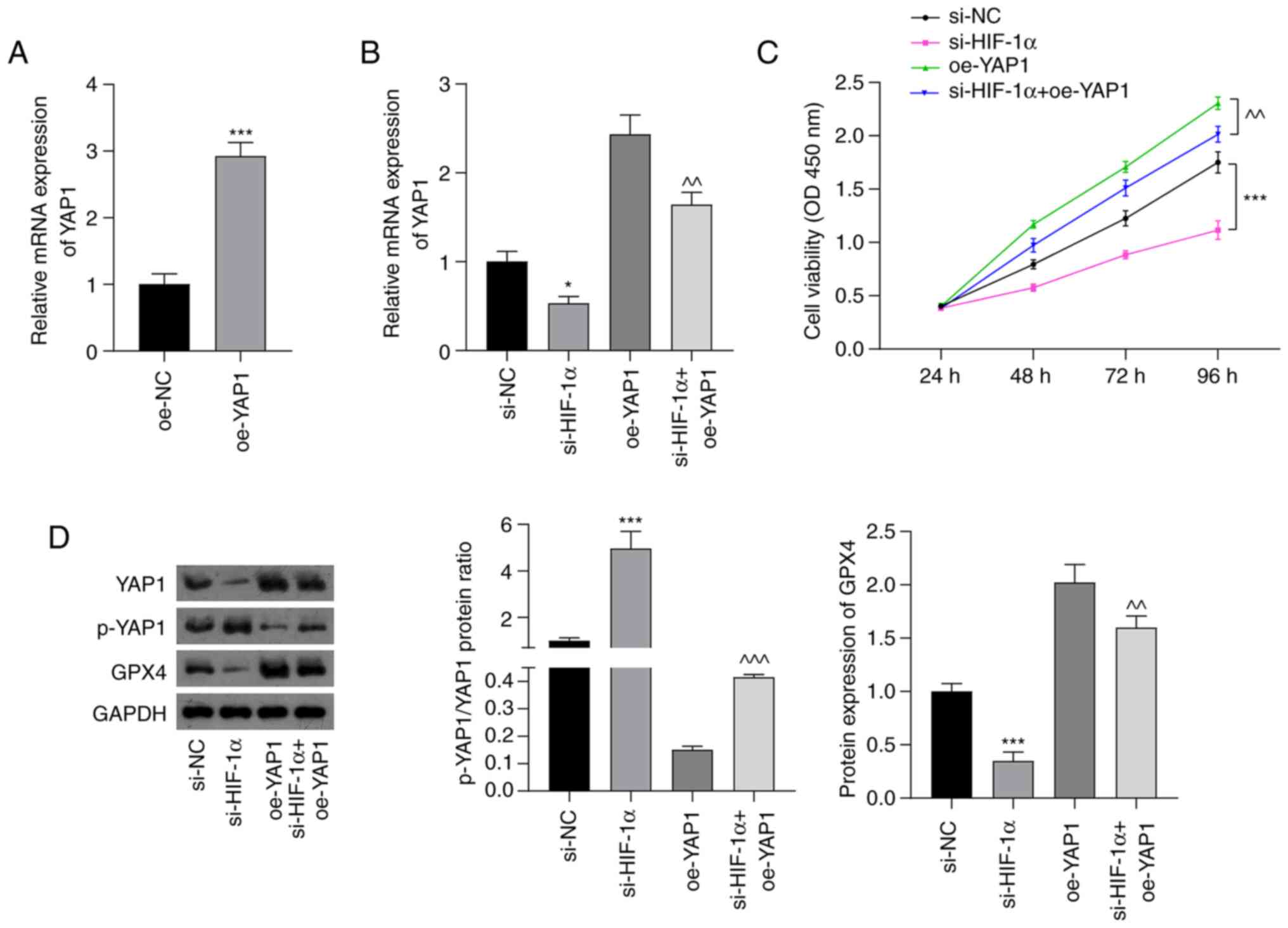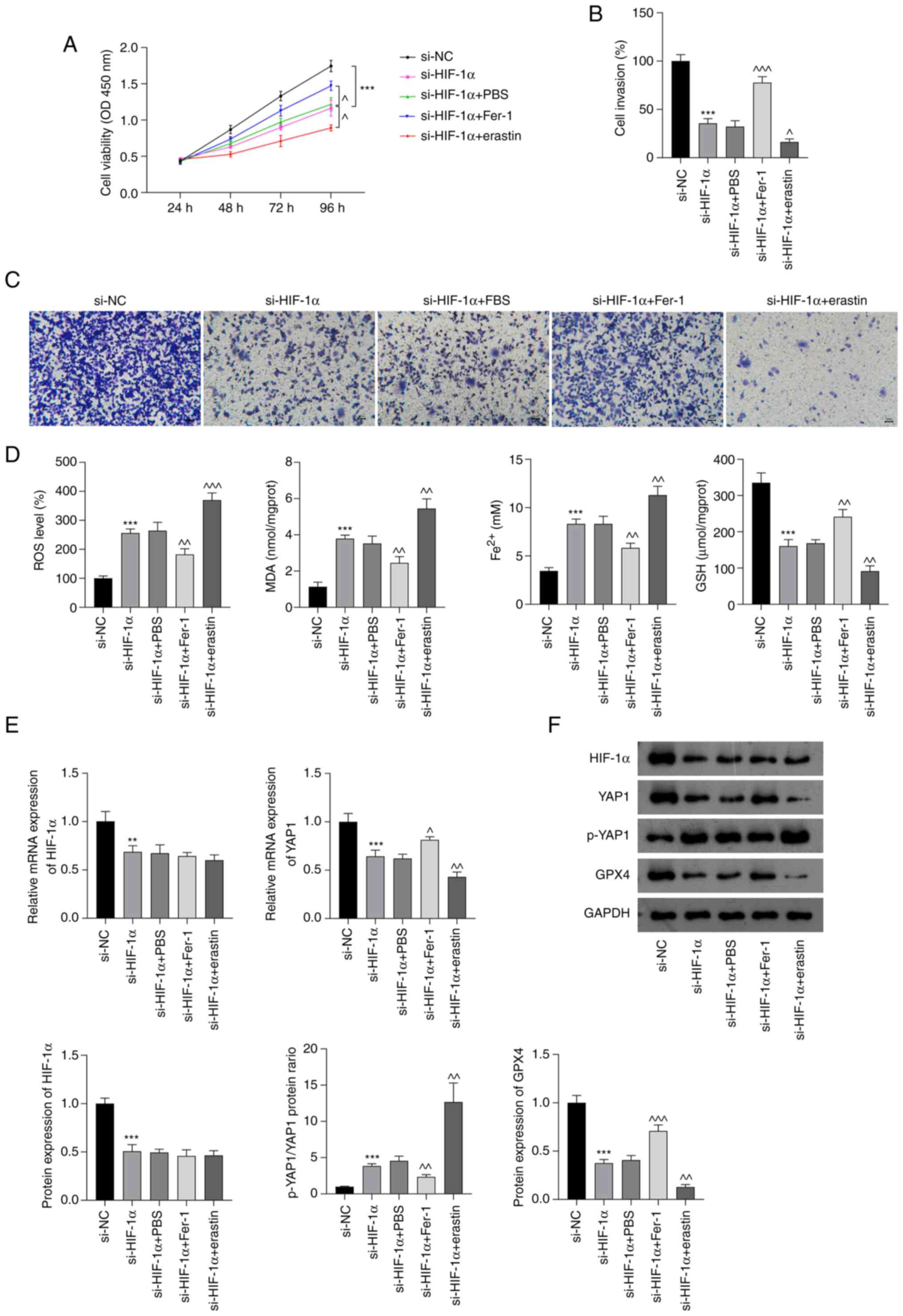|
1
|
Fashoyin-Aje LA, Fernandes LL, Sridhara R,
Keegan P and Pazdur R: Demographic composition of lung cancer
trials: FDA analysis. J Clin Oncol. 36 (15_suppl):S90882018.
View Article : Google Scholar
|
|
2
|
Siegel RL, Miller KD and Jemal A: Cancer
statistics, 2020. CA Cancer J Clin. 70:7–30. 2020. View Article : Google Scholar : PubMed/NCBI
|
|
3
|
Salgia R, Pharaon R, Mambetsariev I, Nam A
and Sattler M: The improbable targeted therapy: KRAS as an emerging
target in non-small cell lung cancer (NSCLC). Cell Rep Med.
2:1001862021. View Article : Google Scholar : PubMed/NCBI
|
|
4
|
Goodgame B, Viswanathan A, Zoole J, Gao F,
Miller CR, Subramanian J, Meyers BF, Patterson AG and Govindan R:
Risk of recurrence of resected stage I non-small cell lung cancer
in elderly patients as compared with younger patients. J Thorac
Oncol. 4:1370–1374. 2009. View Article : Google Scholar : PubMed/NCBI
|
|
5
|
Dixon SJ, Lemberg KM, Lamprecht MR, Skouta
R, Zaitsev EM, Gleason CE, Patel DN, Bauer AJ, Cantley AM, Yang WS,
et al: Ferroptosis: An iron-dependent form of nonapoptotic cell
death. Cell. 149:1060–1072. 2021. View Article : Google Scholar : PubMed/NCBI
|
|
6
|
Imai H, Matsuoka M, Kumagai T, Sakamoto T
and Koumura T: Lipid peroxidation-dependent cell death regulated by
GPx4 and ferroptosis. Curr Top Microbiol Immunol. 403:143–170.
2017.PubMed/NCBI
|
|
7
|
Tang X, Ding H, Liang M, Chen X, Yan Y,
Wan N, Chen Q, Zhang J and Cao J: Curcumin induces ferroptosis in
non-small-cell lung cancer via activating autophagy. Thoracic
Cancer. 12:1219–1230. 2021. View Article : Google Scholar : PubMed/NCBI
|
|
8
|
Nie J, Lin B, Zhou M, Wu L and Zheng T:
Role of ferroptosis in hepatocellular carcinoma. J Cancer Res Clin
Oncol. 144:2329–2337. 2018. View Article : Google Scholar : PubMed/NCBI
|
|
9
|
Liang C, Zhang X, Yang M and Dong X:
Recent progress in ferroptosis inducers for cancer therapy. Adv
Mater. 31:e19041972019. View Article : Google Scholar : PubMed/NCBI
|
|
10
|
Shen Z, Song J, Yung BC, Zhou Z, Wu A and
Chen X: Emerging strategies of cancer therapy based on ferroptosis.
Adv Mater. 30:e17040072018. View Article : Google Scholar : PubMed/NCBI
|
|
11
|
Eling N, Reuter L, Hazin J, Hamacher-Brady
A and Brady NR: Identification of artesunate as a specific
activator of ferroptosis in pancreatic cancer cells. Oncoscience.
2:517–532. 2015. View Article : Google Scholar : PubMed/NCBI
|
|
12
|
Li ZJ, Dai HQ, Huang XW, Feng J, Deng JH,
Wang ZX, Yang XM, Liu YJ, Wu Y, Chen PH, et al: Artesunate
synergizes with sorafenib to induce ferroptosis in hepatocellular
carcinoma. Acta Pharmacol Sin. 42:301–310. 2021. View Article : Google Scholar : PubMed/NCBI
|
|
13
|
Hao S, Yu J, He W, Huang Q, Zhao Y, Liang
B, Zhang S, Wen Z, Dong S, Rao J, et al: Cysteine dioxygenase 1
mediates erastin-induced ferroptosis in human gastric cancer cells.
Neoplasia. 19:1022–1032. 2017. View Article : Google Scholar : PubMed/NCBI
|
|
14
|
Li Y, Yan H, Xu X, Liu H, Wu C and Zhao L:
Erastin/sorafenib induces cisplatin-resistant non-small cell lung
cancer cell ferroptosis through inhibition of the Nrf2/xCT pathway.
Oncol Lett. 19:323–333. 2020.PubMed/NCBI
|
|
15
|
Li H, Jia Y and Wang Y: Targeting HIF-1α
signaling pathway for gastric cancer treatment. Pharmazie. 74:3–7.
2019.PubMed/NCBI
|
|
16
|
Qin Y, Liu HJ, Li M, Zhai DH, Tang YH,
Yang L, Qiao KL, Yang JH, Zhong WL, Zhang Q, et al: Salidroside
improves the hypoxic tumor microenvironment and reverses the drug
resistance of platinum drugs via HIF-1α signaling pathway.
EBioMedicine. 38:25–36. 2018. View Article : Google Scholar : PubMed/NCBI
|
|
17
|
Pezzuto A and Carico E: Role of HIF-1 in
cancer progression: Novel insights. A review. Curr Mol Med.
18:343–351. 2018. View Article : Google Scholar : PubMed/NCBI
|
|
18
|
Park SY, Jeong KJ, Lee J, Yoon DS, Choi
WS, Kim YK, Han JW, Kim YM, Kim BK and Lee HY: Hypoxia enhances
LPA-induced HIF-1alpha and VEGF expression: Their inhibition by
resveratrol. Cancer Lett. 258:63–69. 2007. View Article : Google Scholar : PubMed/NCBI
|
|
19
|
Kim DH, Sung B, Kang YJ, Hwang SY, Kim MJ,
Yoon JH, Im E and Kim ND: Sulforaphane inhibits hypoxia-induced
HIF-1α and VEGF expression and migration of human colon cancer
cells. Int J Oncol. 47:2226–2232. 2015. View Article : Google Scholar : PubMed/NCBI
|
|
20
|
Ma Z, Xiang X, Li S, Xie P, Gong Q, Goh BC
and Wang L: Targeting hypoxia-inducible factor-1, for cancer
treatment: Recent advances in developing small-molecule inhibitors
from natural compounds. Semin Cancer Biol. 80:379–390. 2022.
View Article : Google Scholar : PubMed/NCBI
|
|
21
|
Zhao J, Zeng G, Lin E, Cai C, Li P, Zou B
and Li J: Combined HIF-1α and SHH Up-Regulation Is a Potential
Biomarker to Predict Poor Prognosis in Postoperative Hepatocellular
Carcinoma. J Invest Surg. 35:1660–1667. 2022. View Article : Google Scholar : PubMed/NCBI
|
|
22
|
Lin Z, Song J, Gao Y, Huang S, Dou R,
Zhong P, Huang G, Han L, Zheng J, Zhang X, et al: Hypoxia-induced
HIF-1α/lncRNA-PMAN inhibits ferroptosis by promoting the
cytoplasmic translocation of ELAVL1 in peritoneal dissemination
from gastric cancer. Redox Biol. 52:1023122022. View Article : Google Scholar : PubMed/NCBI
|
|
23
|
Zhang G, Dai S, Chen Y, Wang H, Chen T,
Shu Q, Chen S, Shou L and Cai X: Aqueous extract of Taxus chinensis
var. mairei regulates the Hippo-YAP pathway and promotes apoptosis
of non-small cell lung cancer via ATF3 in vivo and in vitro. Biomed
Pharmacother. 138:1115062021. View Article : Google Scholar : PubMed/NCBI
|
|
24
|
Zhang X, Li Y, Ma Y, Yang L, Wang T, Meng
X, Zong Z, Sun X, Hua X and Li H: Yes-associated protein (YAP)
binds to HIF-1α and sustains HIF-1α protein stability to promote
hepatocellular carcinoma cell glycolysis under hypoxic stress. J
Exp Clin Cancer Res. 37:2162018. View Article : Google Scholar : PubMed/NCBI
|
|
25
|
Li C, Wang S, Xing Z, Lin A, Liang K, Song
J, Hu Q, Yao J, Chen Z, Park PK, et al: A ROR1-HER3-lncRNA
signalling axis modulates the Hippo-YAP pathway to regulate bone
metastasis. Nat Cell Biol. 19:106–119. 2017. View Article : Google Scholar : PubMed/NCBI
|
|
26
|
Yu M, Chen Y, Li X, Yang R, Zhang L,
Huangfu L, Zheng N, Zhao X, Lv L, Hong Y, et al: YAP1 contributes
to NSCLC invasion and migration by promoting Slug transcription via
the transcription co-factor TEAD. Cell Death Dis. 9:4642018.
View Article : Google Scholar : PubMed/NCBI
|
|
27
|
Wang Y and Liu S: LncRNA GHET1 promotes
hypoxia-induced glycolysis, proliferation, and invasion in
triple-negative breast cancer through the Hippo/YAP signaling
pathway. Front Cell Dev Biol. 9:6435152021. View Article : Google Scholar : PubMed/NCBI
|
|
28
|
Yang WH, Ding CC, Sun T, Rupprecht G, Lin
CC, Hsu D and Chi JT: The Hippo pathway effector TAZ regulates
ferroptosis in renal cell carcinoma. Cell Rep. 28:2501–2508.e4.
2019. View Article : Google Scholar : PubMed/NCBI
|
|
29
|
Zhu G, Murshed A, Li H, Ma J, Zhen N, Ding
M, Zhu J, Mao S, Tang X, Liu L, et al: O-GlcNAcylation enhances
sensitivity to RSL3-induced ferroptosis via the YAP/TFRC pathway in
liver cancer. Cell Death Discov. 7:832021. View Article : Google Scholar : PubMed/NCBI
|
|
30
|
Ye S, Xu M, Zhu T, Chen J, Shi S, Jiang H,
Zheng Q, Liao Q, Ding X and Xi Y: Cytoglobin promotes sensitivity
to ferroptosis by regulating p53-YAP1 axis in colon cancer cells. J
Cell Mol Med. 25:3300–3311. 2021. View Article : Google Scholar : PubMed/NCBI
|
|
31
|
Cao X, Li Y, Wang Y, Yu T, Zhu C, Zhang X
and Guan J: Curcumin suppresses tumorigenesis by ferroptosis in
breast cancer. PLoS One. 17:e02613702022. View Article : Google Scholar : PubMed/NCBI
|
|
32
|
Livak KJ and Schmittgen TD: Analysis of
relative gene expression data using real-time quantitative PCR and
the 2(−Delta Delta C(T) method. Methods. 25:402–408. 2001.
View Article : Google Scholar : PubMed/NCBI
|
|
33
|
Stockwell BR, Friedmann Angeli JP, Bayir
H, Bush AI, Conrad M, Dixon SJ, Fulda S, Gascón S, Hatzios SK,
Kagan VE, et al: Ferroptosis: A regulated cell death nexus linking
metabolism, redox biology, and disease. Cell. 171:273–285. 2017.
View Article : Google Scholar : PubMed/NCBI
|
|
34
|
Yang WS, SriRamaratnam R, Welsch ME,
Shimada K, Skouta R, Viswanathan VS, Cheah JH, Clemons PA, Shamji
AF, Clish CB, et al: Regulation of ferroptotic cancer cell death by
GPX4. Cell. 156:317–331. 2014. View Article : Google Scholar : PubMed/NCBI
|
|
35
|
Yang Y, Tang H, Zheng J and Yang K: The
PER1/HIF-1alpha negative feedback loop promotes ferroptosis and
inhibits tumor progression in oral squamous cell carcinoma. Transl
Oncol. 18:1013602022. View Article : Google Scholar : PubMed/NCBI
|
|
36
|
Wang R and Zhu G: A narrative review for
the Hippo-YAP pathway in cancer survival and immunity: the Yin-Yang
dynamics. Transl Cancer Res. 11:262–275. 2022. View Article : Google Scholar : PubMed/NCBI
|
|
37
|
Tang T, Yang Z, Zhu Q, Wu Y, Sun K,
Alahdal M, Zhang Y, Xing Y, Shen Y, Xia T, et al: Up-regulation of
miR-210 induced by a hypoxic microenvironment promotes breast
cancer stem cell metastasis, proliferation, and self-renewal by
targeting E-cadherin. FASEB J. Sep 6–2018.(Epub ahead of print).
View Article : Google Scholar
|
|
38
|
Marhuenda E, Campillo N, Gabasa M,
Martínez-García MA, Campos-Rodríguez F, Gozal D, Navajas D, Alcaraz
J, Farré R and Almendros I: Effects of sustained and intermittent
hypoxia on human lung cancer cells. Am J Respir Cell Mol Biol.
61:540–544. 2019. View Article : Google Scholar : PubMed/NCBI
|
|
39
|
Yang L, Zhang W, Wang Y, Zou T, Zhang B,
Xu Y, Pang T, Hu Q, Chen M, Wang L, et al: Hypoxia-induced miR-214
expression promotes tumour cell proliferation and migration by
enhancing the Warburg effect in gastric carcinoma cells. Cancer
Lett. 414:44–56. 2018. View Article : Google Scholar : PubMed/NCBI
|
|
40
|
Pawlus MR and Hu CJ: Enhanceosomes as
integrators of hypoxia inducible factor (HIF) and other
transcription factors in the hypoxic transcriptional response. Cell
Signal. 25:1895–1903. 2013. View Article : Google Scholar : PubMed/NCBI
|
|
41
|
Jensen RL, Ragel BT, Whang K and Gillespie
D: Inhibition of hypoxia inducible factor-1alpha (HIF-1alpha)
decreases vascular endothelial growth factor (VEGF) secretion and
tumor growth in malignant gliomas. J Neurooncol. 78:233–247. 2006.
View Article : Google Scholar : PubMed/NCBI
|
|
42
|
Forcina GC and Dixon SJ: GPX4 at the
crossroads of lipid homeostasis and ferroptosis. Proteomics.
19:e18003112019. View Article : Google Scholar : PubMed/NCBI
|
|
43
|
Xia X, Fan X, Zhao M and Zhu P: The
relationship between ferroptosis and tumors: A novel landscape for
therapeutic approach. Curr Gene Ther. 19:117–124. 2019. View Article : Google Scholar : PubMed/NCBI
|
|
44
|
Wang X, Wu M, Zhang X, Li F, Zeng Y, Lin
X, Liu X and Liu J: Hypoxia-responsive nanoreactors based on
self-enhanced photodynamic sensitization and triggered ferroptosis
for cancer synergistic therapy. J Nanobiotechnology. 19:2042021.
View Article : Google Scholar : PubMed/NCBI
|
|
45
|
Fan Z, Yang G, Zhang W, Liu Q, Liu G, Liu
P, Xu L, Wang J, Yan Z, Han H, et al: Hypoxia blocks ferroptosis of
hepatocellular carcinoma via suppression of METTL14 triggered
YTHDF2-dependent silencing of SLC7A11. J Cell Mol Med.
25:10197–10212. 2021. View Article : Google Scholar : PubMed/NCBI
|
|
46
|
Wu Y, Wang J, Zhao T, Chen J, Kang L, Wei
Y, Han L, Shen L, Long C, Wu S and Wei G: Di-(2-ethylhexyl)
phthalate exposure leads to ferroptosis via the HIF-1α/HO-1
signaling pathway in mouse testes. J Hazard Mater. 426:1278072022.
View Article : Google Scholar : PubMed/NCBI
|
|
47
|
Shin D, Kim EH, Lee J and Roh JL: Nrf2
inhibition reverses resistance to GPX4 inhibitor-induced
ferroptosis in head and neck cancer. Free Radic Biol Med.
129:454–462. 2018. View Article : Google Scholar : PubMed/NCBI
|
|
48
|
Gong Y, Wang N, Liu N and Dong H: Lipid
peroxidation and GPX4 inhibition are common causes for
myofibroblast differentiation and ferroptosis. DNA Cell Biol.
38:725–733. 2019. View Article : Google Scholar : PubMed/NCBI
|
|
49
|
Yamamura S, Goda N, Akizawa H, Kohri N,
Balboula AZ, Kobayashi K, Bai H, Takahashi M and Kawahara M:
Yes-associated protein 1 translocation through actin cytoskeleton
organization in trophectoderm cells. Dev Biol. 468:14–25. 2020.
View Article : Google Scholar : PubMed/NCBI
|
|
50
|
Coelho MA, de Carné Trécesson S, Rana S,
Zecchin D, Moore C, Molina-Arcas M, East P, Spencer-Dene B, Nye E,
Barnouin K, et al: Oncogenic RAS signaling promotes tumor
immunoresistance by stabilizing PD-L1 mRNA. Immunity.
47:1083–1099.e6. 2017. View Article : Google Scholar : PubMed/NCBI
|
|
51
|
Zhou Y, Yang R and Ma G: YAP1 knockdown
suppresses the proliferation, migration and invasion of human
nasopharyngeal carcinoma cells. Nan Fang Yi Ke Da Xue Xue Bao.
39:286–291. 2019.(In Chinese). PubMed/NCBI
|


















